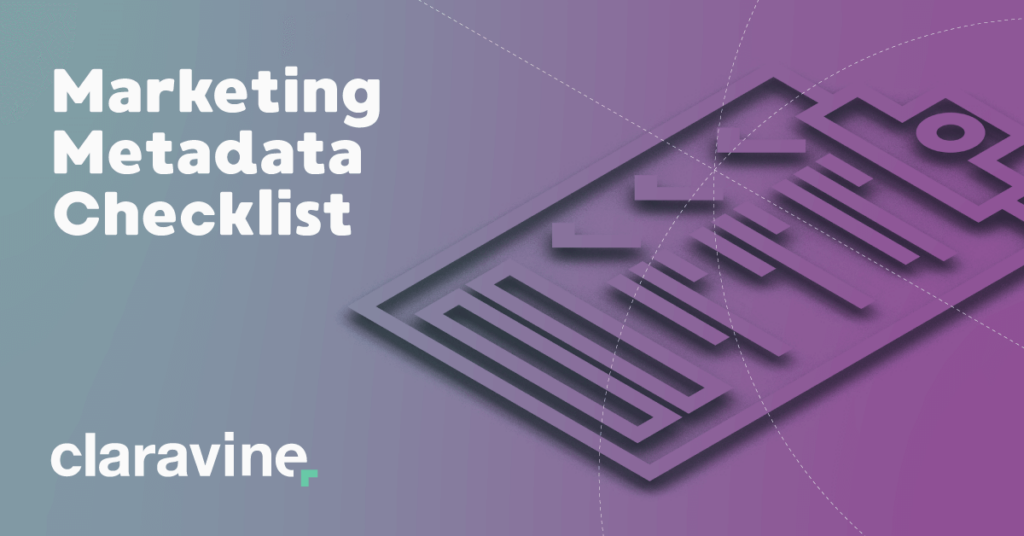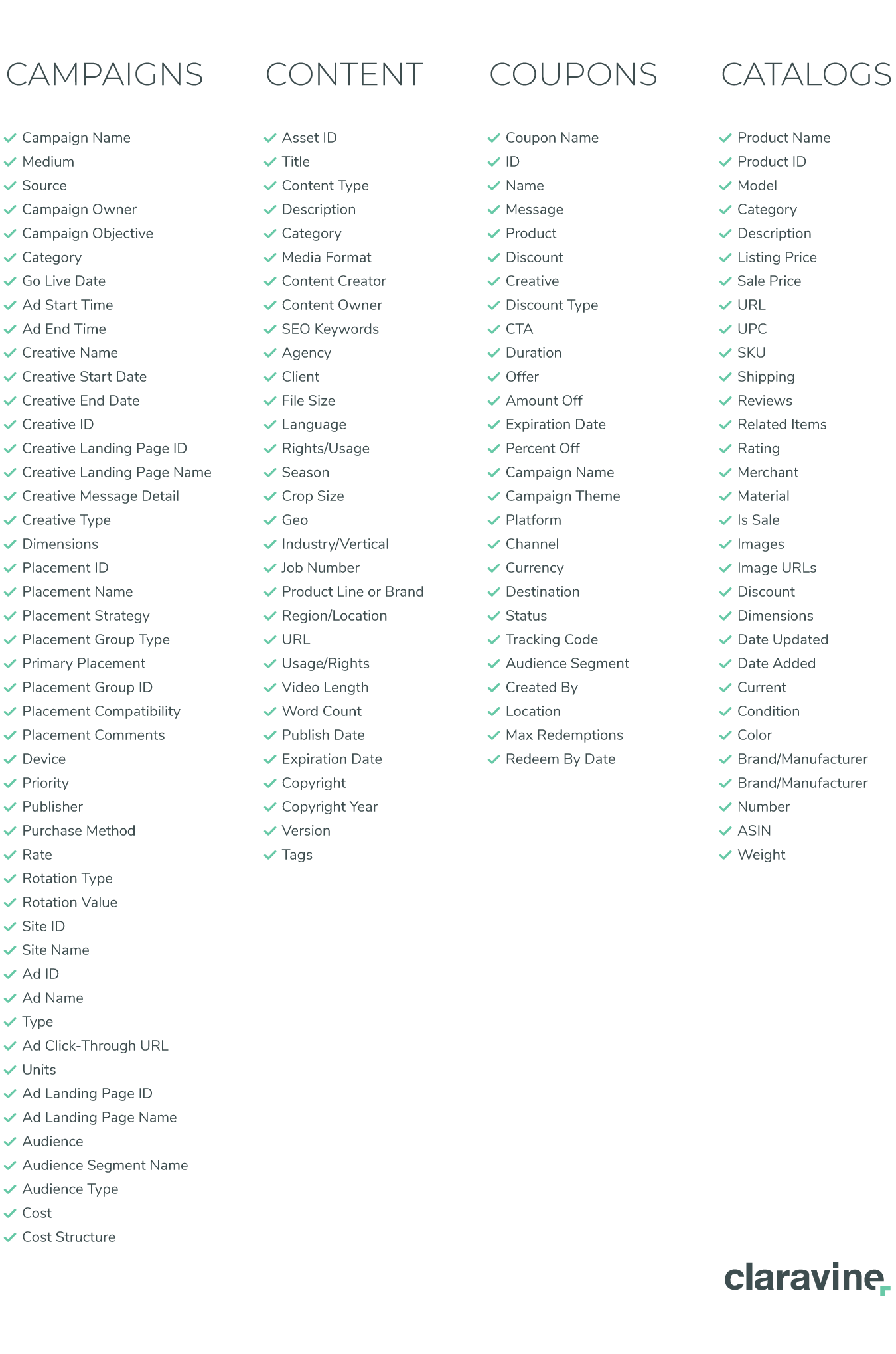The Big List of Marketing Metadata Fields

Are you currently experiencing marketing metadata overload? Have you gained 25 fields of metadata in the past 6 weeks? Are your databases starting to feel snug?
If you answered yes to any of these questions then have we got the program for you!
Jokes aside, metadata management for your digital assets is actually an important and often overlooked data management process. This data is important because your execution and decision-making systems rely on these values for personalization, segmentation, analytics enrichment and more.
There are a number of items marketers manage that require or can be optimized with rich metadata. The marketing assets most notable are what I like to call the 4 Cs: Campaigns, Content, Coupons, Catalogs. While there may be others, I find that these 4 have the most need for thorough metadata.
Campaigns are primarily digital marketing campaigns that have varied metadata including creative, audiences, placement, and other key attributes. Campaign metadata can enrich Google Analytics, Adobe Analytics, Google Ads and lots of other marketing systems.
Content can mean anything from blog articles and PDFs to videos and images with metadata that includes creator, publish date, keywords, meta description, title tag, word count, file size, etc. Improved content metadata can help in all kinds of ways include search engine discovery, personalization and more. Content marketing teams should have a process for managing this metadata.
Coupons are digital coupons that have discounts, expiration dates, usage thresholds, and more.
Digital catalogs have extensive product listings that require metadata like price, category, manufacturer, and dozens of other attributes.
The following checklist for these marketing assets is not exhaustive – we’ve seen metadata templates with over 70 elements. However, we want to give you an extensive example of the type of metadata savvy marketers and organizations use to enrich their campaigns, contents, coupons and catalogs.
Here’s a list of 125+ marketing metadata elements companies use for their digital marketing assets:

And here’s an easy-to-copy version:
| Campaigns | Content | Coupons | Catalogs |
| Campaign Name | Asset ID | Coupon Name | Product Name |
| Medium | Title | ID | Product ID |
| Source | Content Type | Name | Model |
| Campaign Owner | Description | Message | Category |
| Campaign Objective | Category | Product | Description |
| Category | Media Format | Discount | Listing Price |
| Go Live Date | Content Creator | Creative | Sale Price |
| Ad Start Time | Content Owner | Discount Type | URL |
| Ad End Time | SEO Keywords | CTA | UPC |
| Creative Name | Agency | Duration | SKU |
| Creative Start Date | Client | Offer | Shipping |
| Creative End Date | File Size | Amount Off | Reviews |
| Creative ID | Language | Expiration Date | Related Items |
| Creative Landing Page ID | Rights/Usage | Percent Off | Rating |
| Creative Landing Page Name | Season | Campaign Name | Merchant |
| Creative Message Detail | Crop Size | Campaign Theme | Material |
| Creative Type | Geo | Platform | Is Sale |
| Dimensions | Industry/Vertical | Channel | Images |
| Placement ID | Job Number | Currency | Image URLs |
| Placement Name | Product Line or Brand | Destination | Discount |
| Placement Strategy | Region/Location | Status | Dimensions |
| Placement Group Type | URL | Tracking Code | Date Updated |
| Primary Placement | Usage/Rights | Audience Segment | Date Added |
| Placement Group ID | Video Length | Created By | Current |
| Placement Compatibility | Word Count | Location | Condition |
| Placement Comments | Publish Date | Max Redemptions | Color |
| Device | Expiration Date | Redeem By Date | Brand/Manufacturer |
| Priority | Copyright | Brand/Manufacturer Number | |
| Publisher | Copyright Year | ASIN | |
| Purchase Method | Version | Weight | |
| Rate | Tags | ||
| Rotation Type | Meta Description (site pages) | ||
| Rotation Value | |||
| Site ID | |||
| Site Name | |||
| Ad ID | |||
| Ad Name | |||
| Type | |||
| Ad Click-Through URL | |||
| Units | |||
| Ad Landing Page ID | |||
| Ad Landing Page Name | |||
| Audience | |||
| Audience Segment Name | |||
| Audience Type | |||
| Cost | |||
| Cost Structure |
Learn how Claravine optimizes your marketing metadata management, get started here.



